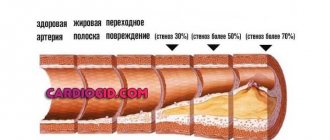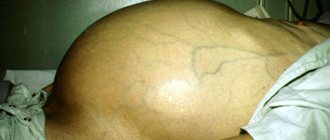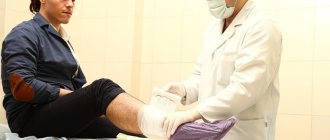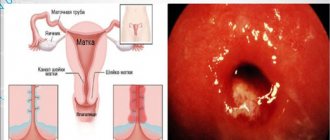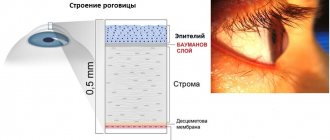What is a dislocation?
A dislocation is a violation of the articulation of the articular surfaces of bones (congruence), which occurs as a result of destructive processes in the joints (arthrosis, arthritis) or trauma. When injuries occur under the influence of mechanical forces, the ends of the bones are forced to shift from their normal position.
Even during uterine development, a person can receive an injury that will cause a dislocation. This type of damage accompanies people at all stages of life.
During a dislocation, the integrity and functionality of the joint is disrupted. In complex cases, rupture of the joint capsule and damage to ligaments, arteries and nerve nodes may occur. Such a disease requires the intervention of specialists who will provide first aid to patients and prescribe constructive treatment.
Most often, dislocations occur due to impacts and falls. A special risk group consists of athletes in contact sports (football, hockey, volleyball, etc.) or people involved in sports that involve frequent falls (skiing, skating).
The dislocated joint is temporarily deformed and immobilized. Characteristic symptoms are severe pain and swelling. The dislocation must be corrected, returning the displaced joint to its original place.
Diagnostics
Before you begin treatment, you need to find out what to treat. When diagnosing a dislocation, the specialist’s procedure is as follows:
- The doctor palpates (feels) the damaged area. Its purpose is to find out the degree of deformation of the joint, to find out whether the arteries are damaged, whether the skin retains sensitivity;
- The patient will then be sent for an x-ray to determine the exact area that will need treatment;
- In difficult cases, computed tomography, magnetic resonance imaging or ultrasound examination of the joint may be prescribed.
Once the diagnosis is made, treatment begins. The goal is to put the displaced articular surfaces back in place.
Types of dislocations
Dislocations are classified according to the degree of displacement, the origin and the size of the joint that was displaced.
Depending on the degree of displacement, a dislocation can be complete, that is, one that is accompanied by complete divergence of the ends of the joints, or incomplete (subluxation) - when the surfaces of the joints partially touch. The dislocated joint is the one farthest away from the body. Exceptions are the vertebrae (the vertebra located above is considered dislocated), the collarbone, and the shoulder (the dislocation can be anterior or posterior).
Depending on the origin, dislocations can be congenital or acquired. Congenital ones arise due to a violation of the intrauterine development of the child. A common pathology is dislocation of the hip joint (dysplasia), less common is dislocation of the knee joint. Acquired dislocations are the result of injuries or various diseases (arthritis, arthrosis, osteomyelitis, poliomyelitis, etc.)
Also, dislocations can be open or closed. Closed dislocations occur without tearing the skin and tissue over the joint, while open dislocations occur with the formation of a wound. Damage to muscles, blood vessels, bones, tendons or nerves makes the dislocation more complicated. Habitual dislocation is spoken of in situations where, due to poor treatment, dislocation can occur again even with minor impact. Pathological dislocation, characteristic mainly of the hip and shoulder joints, occurs when the pathological process destroys the surfaces of the joints.
If the muscles surrounding the joint are subject to paralysis or paresis, they speak of paralytic dislocation.
In addition, modern medicine identifies more than ten types of dislocations, which can affect the following joints in the following parts of the body:
- Ankle dislocation
- Sprained ankle
- Shoulder dislocation
- Dislocated leg
- Dislocation of the neck (cervical vertebra)
- Sprained fingers and toes
- Elbow dislocation
- Knee dislocation
- Hip dislocation
- Dislocation of the acromial end of the clavicle
- Dislocated arm
- Jaw dislocation
Symptoms of dislocations
Symptoms of a dislocation depend on its type. For example, congenital dislocation of the hip joint is manifested by gait disturbances, since the abduction of the leg is limited, the gluteal folds are asymmetrical, and over time one leg becomes shorter than the other, which is fraught with lameness. If the hip dislocation is bilateral, the gait becomes “duck-like.”
Congenital dislocation of the knee joint is accompanied by severe pain and gait disturbances; the joint is inflamed and immobile. Traumatic dislocations are manifested by swelling, immobility and pain in the joint.
But if we talk about general symptoms, the following symptoms are observed:
- redness appears in the area of the damaged joint;
- severe pain appears, which intensifies with any movement of the limb;
- in the victim, the deformation of the joint is visually determined, since due to dislocation it changes not only its size, but also its shape;
- severe swelling appears in the area of the dislocation;
- some patients lose sensation in their limbs (due to nerve damage);
- motor dysfunction;
- temperature increase;
- fever followed by chills, etc.
How to identify characteristic symptoms?
To understand the signs of a possible dislocation, people use tables, physiological diagrams, and even a thematic presentation helps. The latter may include information about adjacent injuries, which occurs with burns and frostbite.
Despite the fact that all types of dislocations have their own characteristics, they can still be combined into a general list. With such injuries, a person complains of:
- sharp pain with increasing intensity when trying to make a movement;
- redness of the skin;
- swelling;
- local temperature, which means an increase in temperature in the affected area;
- articular deformation, covering a change not only in shape, but also in size;
- change in the length of the affected limb, which is more suitable for an ankle injury;
- the articular end, which is palpated in the “wrong place”.
Occasionally, such foot or hand problems are additionally accompanied by a general increase in temperature and chills. Cases of bruising are common. And when the nerve endings are compressed, the victim complains of partial or complete loss of sensitivity.
Causes of dislocations
In most cases, dislocations occur due to indirect injuries, that is, those in which the site of injury is distant from the damaged joint. For example, falling on an outstretched hand, a person will most likely dislocate the shoulder joint. Also, traumatic dislocation can occur with sudden movements that exceed the normal range of joint mobility. Dislocations from direct joint trauma are much less common.
Many people are diagnosed with joint dislocation due to previous diseases, such as:
- any injury during which the joint is fixed for some time;
- tuberculosis;
- osteomyelitis;
- arthrosis, arthritis, etc.
This type of joint damage can be not only acquired, but also congenital, developing as a result of improper formation of the musculoskeletal system in a person during the period of intrauterine development.
Definition and classification
In medicine, a dislocation is a violation of the congruence of the articular surfaces of bones due to their displacement. This leads to dysfunction of the joint and a decrease in the range of movements in it. The reason for this phenomenon is incongruence, that is, the shape of the articular surfaces does not correspond to each other.
The hand consists of the carpal, metacarpal and phalangeal bones. Any of them can be displaced under the influence of a traumatic factor. Traumatologists distinguish dislocations of the carpal, metacarpal bones and phalanges of the fingers. This article will discuss the displacement of the wrist bones.
Table 1. Types of hand dislocations
| By the nature of the displacement | |
| True | Characterized by complete displacement of the carpal bones relative to the articular surface of the radius |
| Perilunar | It is manifested by a dorso-central displacement of all bones of the wrist, with the exception of the lunate. Often accompanied by various fractures |
| Other dislocations | The wrist consists of 8 small bones. Any of them can be displaced under the influence of traumatic factors. Due to the anatomical features of the structure, dislocation of the bones of the upper row of the wrist (scaphoid, lunate) most often occurs. |
| By prescription | |
| Fresh | We are talking about fresh dislocations if less than 3 days have passed since the injury |
| Stale | Stale displacements are those that occurred a maximum of 2 weeks before going to the hospital. |
| Obsolete | More than two weeks have passed since the injury. Such dislocations are difficult to treat |
| According to the presence of complications | |
| Uncomplicated | Characterized by displacement of the articular surfaces of bones without fractures, rupture of ligaments, tendons, etc. |
| Complicated | Accompanied by damage to nerves, blood vessels, and soft tissues. In some cases, patients are diagnosed with intra-articular fractures of the wrist bones |
| Closed reduction if possible | |
| Reducible | Bone reduction can be successfully accomplished without surgery. All fresh, uncomplicated dislocations are considered reducible. |
| Irreversible | It is impossible to restore the congruence of the articular surfaces using the closed method. In this case, doctors perform surgery. The majority of chronic and complicated dislocations are considered irreducible. |
First aid for sprain
In case of dislocations, you should not self-medicate, as you can cause irreparable harm to the damaged joint.
People around you can provide first aid to the victim as follows:
- immobilize the injured joint and fix it in this position, using for this purpose either a medical splint or any available means;
- if there are damage to the skin in the joint area, they should be treated with alcohol or hydrogen peroxide;
- apply a cold compress to the damaged area, which will help reduce swelling;
- give the victim a medication that will relieve severe pain;
- call an ambulance or independently transport the patient to the nearest medical facility (no later than 2-3 hours after injury).
If a person is injured in the upper extremities, he should be transported to a medical facility in a sitting position. In the case where the victim has injuries to the lower extremities, it is necessary to take him to the hospital in a horizontal position.
Diagnostics
During the examination, the traumatologist (surgeon) will palpate the damaged areas of the body, after which he will refer the patient for a hardware examination. Using radiography, it is possible to determine the extent and exact location of the damage. Once the preliminary diagnosis has been confirmed by x-ray, the patient is treated for the dislocation.
Treatment
The essence of any method of treating a dislocation is to straighten the articular limbs and return them to their usual physiological position. All therapeutic measures for this category of patients must be carried out under local or general anesthesia. The choice of type of anesthesia directly depends on the location of the dislocation and its complexity.
The specialist begins to reduce the joint only after complete immobilization of the damaged limb. The reduction process must be done very carefully. The doctor should not make any sudden movements that could aggravate the situation. The joint will fall into place along with a characteristic sound – a click.
Treatment of traumatic dislocation after reduction of the joint consists of physiotherapeutic manipulations (massage, therapeutic exercises, acupuncture). Pathological dislocations sometimes require surgery to restore joint function. It is also necessary to treat the underlying disease if joint dislocation is its consequence.
Typically, it takes one month for a person to fully restore the functions of an injured limb. During this period, it is recommended to reduce the load on the joint as much as possible. In the second month, you can begin physical activity, gradually increasing it.
Congenital dislocations are treated differently. Therapy should be started as early as possible, the optimal age is up to two years. Otherwise, you will need to apply special splints, wear orthopedic shoes, or even undergo surgery.
Rehabilitation
After removing the plaster cast, patients must undergo rehabilitation, due to which the motor function of the joints will be fully restored.
Everyone, without exception, is recommended to:
- undergo a course of physiotherapeutic procedures;
- engage in physical therapy;
- visit the pool;
- take walks in the fresh air, etc.
Prevention
In order to prevent dislocations, you must first of all take care of your health. Every person should avoid falls and other types of injuries that can cause sprains. Regular exercise will strengthen your joints and make your ligaments more elastic. Don’t forget about proper nutrition and the use of vitamin and mineral complexes, which contain components necessary for the proper functioning of joints.
Author of the article:
Kaplan Alexander Sergeevich |
Orthopedist Education: diploma in General Medicine received in 2009 at the Medical Academy named after. I. M. Sechenov. In 2012, she completed postgraduate studies in the specialty “Traumatology and Orthopedics” at the City Clinical Hospital named after. Botkin at the Department of Traumatology, Orthopedics and Disaster Surgery. Our authors
Prevention
The measures that are designed to prevent dislocation are quite simple. The difficulty lies in the need for strict self-discipline when it comes to being attentive to your own health and life.
Try to avoid falling, hitting, or getting into an accident. If your activity is closely related to sports, then do not neglect protection. As for the fair sex, beauty does not require sacrifice. You can always choose comfortable and beautiful shoes with stable heels.
Be careful, careful and take care of yourself.
© 2021, Golub Oleg Vasilievich. All rights reserved.
